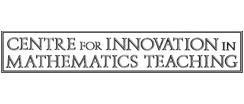Measuring Lines, Angles and using Scale drawings
Students are required to accurately measure the length of lines and the size of angles and use these skills when working with bearings and scale diagrams. This resource list provides resources designed to support the use of concrete and digital instruments to measure line segments and angles in geometric figures, and a range of resources using these skills to draw and interpret scale drawings.
Visit the secondary mathematics webpage to access all lists.
- ALL
- Textbook
- Activity sheet
Textbook
Angles
This resource contains a variety of questions for student consolidation. The angles file begins by exploring how many degrees there are in a fraction of a turn and the points of a compass followed by a variety of exercises in a number of contexts. Measuring explains how to measure acute and obtuse angles using a protractor followed by an exercise containing a variety of questions for students to complete. Following sections include applying drawing lines and angles to construct triangles.
The activities file contains activities requiring students to draw triangles, explore angles in triangle, quadrilaterals and polygons.
Angles, Bearings and Maps
Angles, bearings and maps begin by reviewing how to measure angles and proceeds by exploring angles in parallel lines. Students very often find the concept of bearings difficult to grasp hence the following section, Bearings, is very useful to introduce students to the concept. Scale Drawing applies the ability to draw and measure lines and angles accurately.
The activity file contains the activity Flight Paths which uses a map of Britain on which to answer questions about flight paths using bearings and scale diagrams.
Scale Drawing
When using scale drawings, students need to be confident measuring lengths and converting between units. This resource begins by recapping simple conversions of metric units of length and checking that students are confident of using the most appropriate unit of measure. There are also some questions requiring students to measure angles accurately. This work leads to work on Plans in which students use scale drawings to draw and interpret plans of buildings. Maps uses larger scales in order to draw and interpret a variety of maps.
This topic gives opportunity for practical work. The activities include suggestions such as drawing plans of the classroom. There is also an activity which incorporates work on speed in which students use scale diagrams to calculate how long it takes to cross the Channel by ferry.
Activity sheet
Measurement
It cannot always be taken for granted that all students can measure lines accurately. Measurement pack one contains a variety of activities to be used to ensure students can perform the basics correctly. Using a ruler, Snails’ trails, How long, With a ruler, Jumping, and Measuring lengths are all activities requiring students to measure lengths accurately.
Measurement pack two contains further activities requiring a greater degree of accuracy such as measuring in centimetres to the nearest millimetre. Appropriate activities are Accurate Measuring, Measuring pencils and How much longer?
Angle
As with measuring lines, it cannot always be assumed that students are able to measure and draw angles accurately. This resource contains a number of activities to support this objective. Angles pack one contains activities Equal angles, Measuring angles, Drawing angles, Satellite Signals and some activity sheets which require the use of the programming language LOGO.
Angles pack two contains activities that require students to apply the skills practised in the activities in pack one. Free hand angles is a nice paper folding activity using circular pieces of paper, Bearings and Bearings and Scale Drawing gives a good introduction to drawing diagrams to scale whilst Journeys requires students to begin by sketching the diagram before drawing accurately.
Bearings
This resource consists of 11 instant maths ideas, including guidance and possible solutions. The resource is ideal for use as starter questions, extension question or probing questions to assess understanding, requiring students to:
• explain the use of bearings in practical activities
• use bearings to crack a code
• calculate the connection between the bearing of a journey and the bearing of the return journey
• create a treasure map and find the bearings of journeys from one coordinate to another.
Bearings
In this Defence Dynamics resource students work as the Operations Team for a Royal Air Force (RAF) squadron on Quick Reaction Alert (QRA). They are presented with a series of imaginary scenarios, students have to review and plan routes for a number of aircraft facing different crises.
The lesson aims to help the development of a range of different skills such as varying scale maps, distances, bearings and aircraft speeds.
Plans and Elevations
This resource contains four instant maths ideas, ideal for use as starter activities, extension work or as probing questions to assess understanding. The activities provide students with the opportunity to photograph and consider the plans of unusual objects, create plans and elevation drawings of solids made from interlocking cubes, draw some Escher 'impossible objects' and draw diagrams of rooms to scale.





